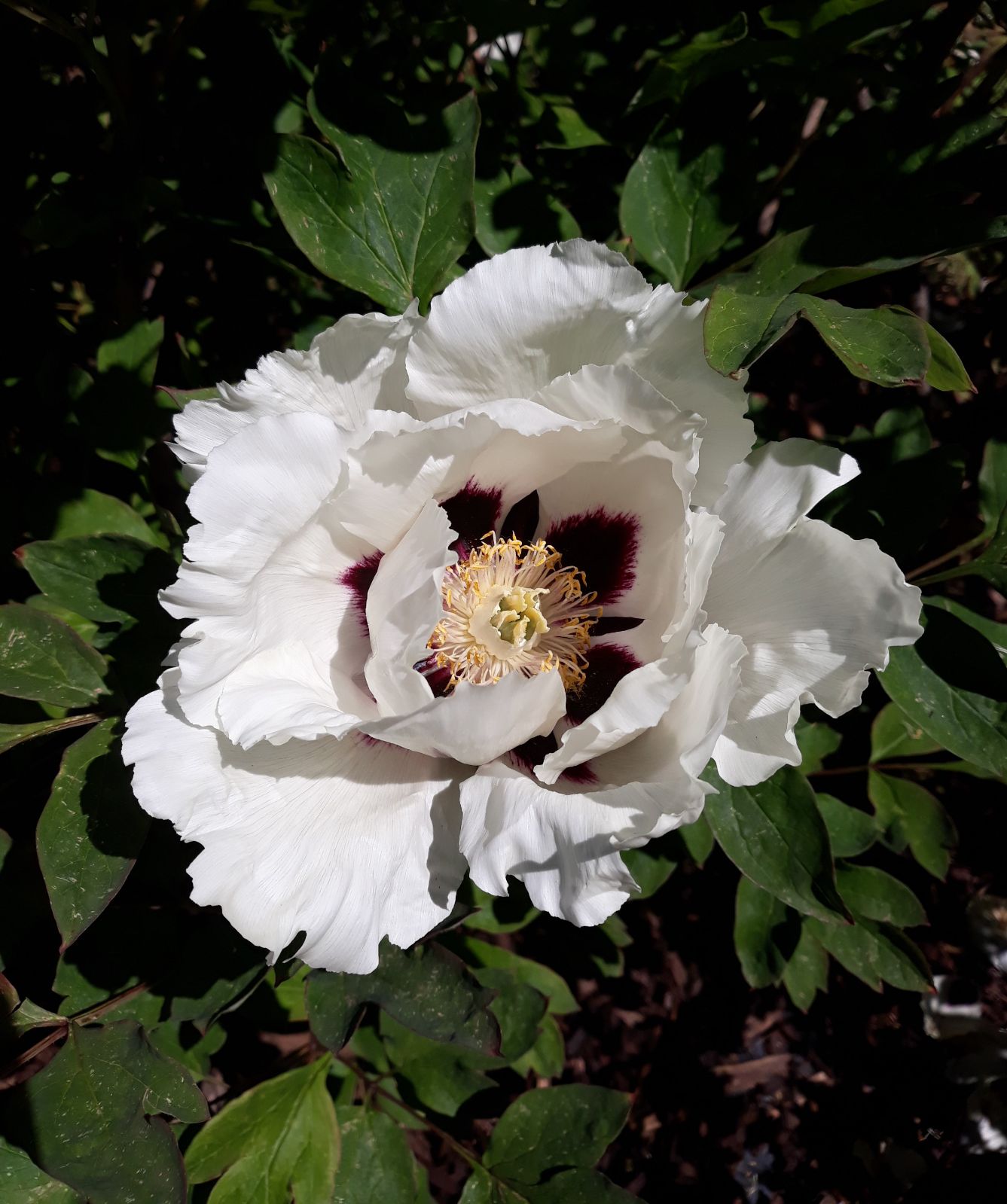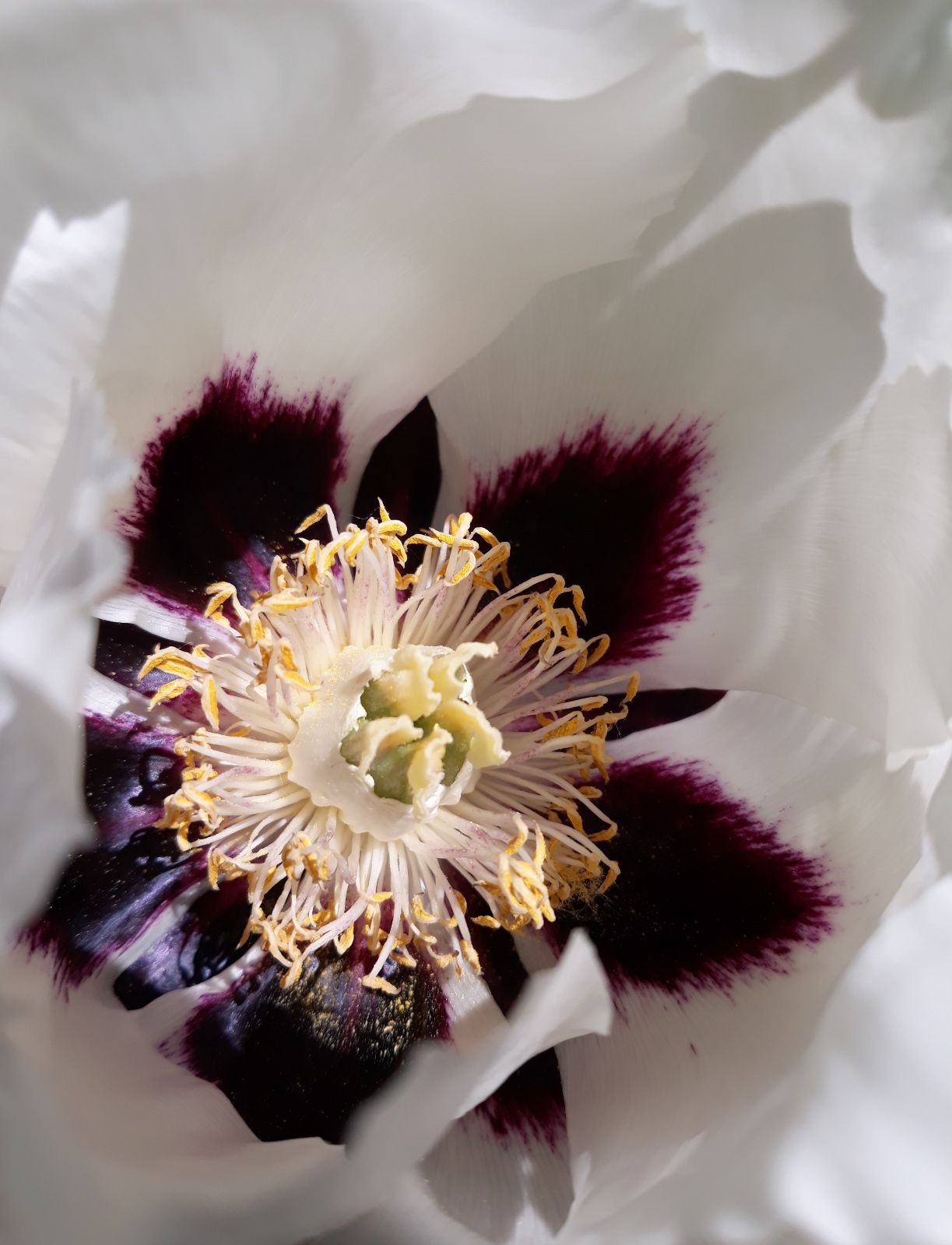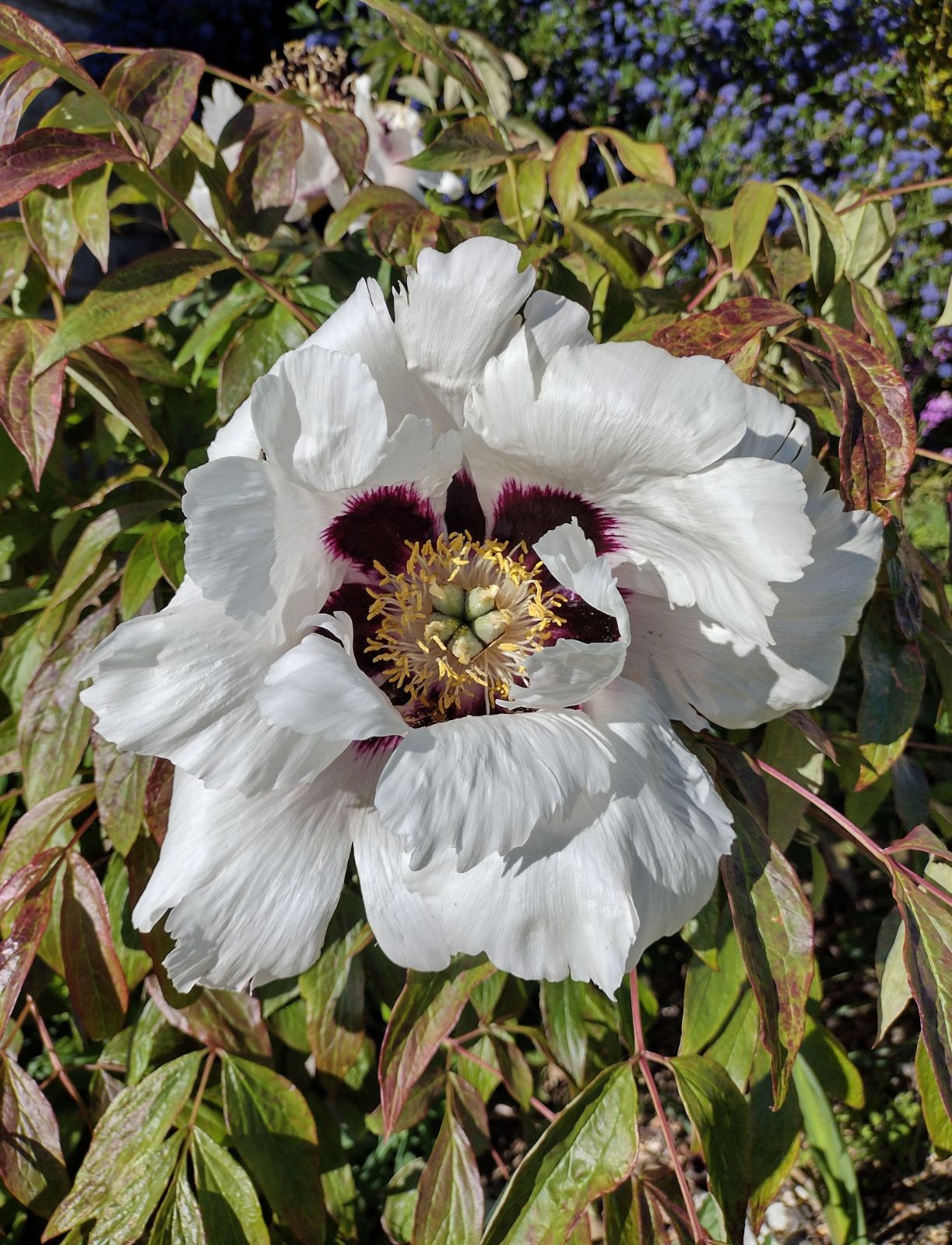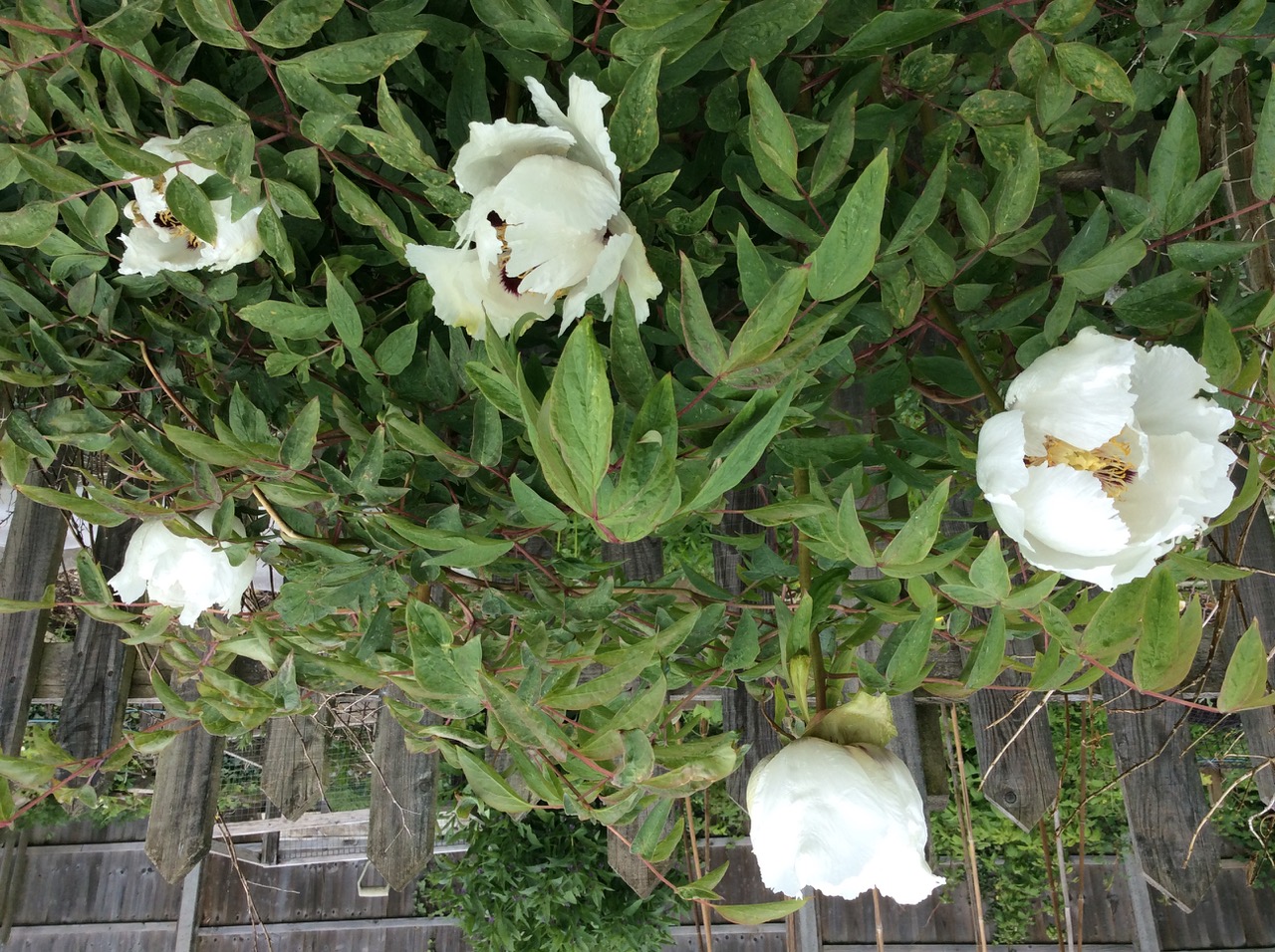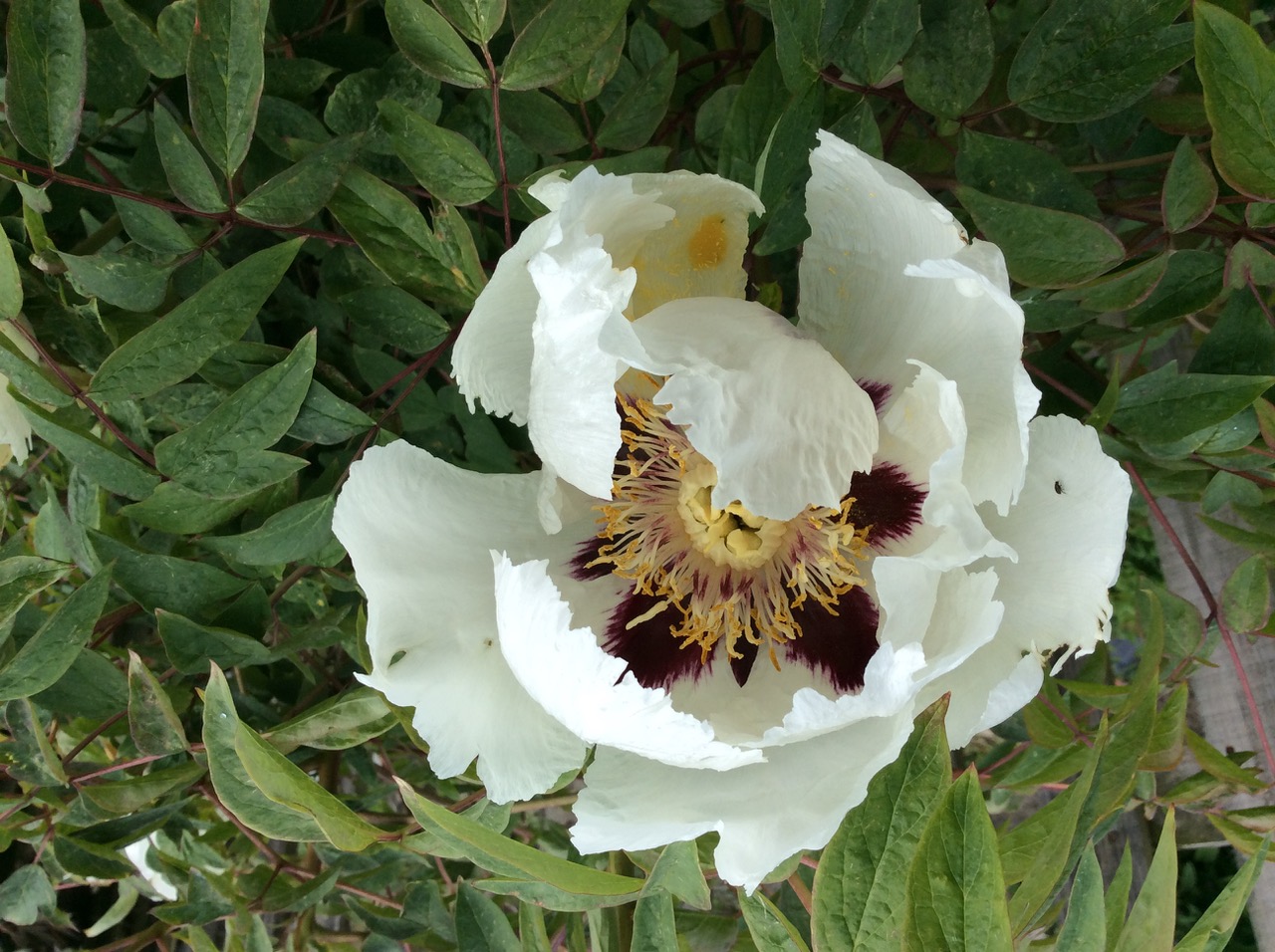Paeonia rockii
Sponsor
Kindly sponsored by
Sponsored by David Sayers in memory of Hedvika Fraser.
Credits
Julian Sutton (2020)
Recommended citation
Sutton, J. (2020), 'Paeonia rockii' from the website Trees and Shrubs Online (treesandshrubsonline.
Other taxa in genus
- Paeonia cathayana
- Paeonia Central Plains Cultivars
- Paeonia decomposita
- Paeonia delavayi
- Paeonia Gansu Cultivars
- Paeonia Itoh Cultivars
- Paeonia Japanese Cultivars
- Paeonia jishanensis
- Paeonia × lemoinei
- Paeonia ludlowii
- Paeonia Lutea Hybrids
- Paeonia ostii
- Paeonia Other Shrubby Hybrids
- Paeonia qiui
- Paeonia rotundiloba
- Paeonia Southern Yangtze Cultivars
- Paeonia Southwest Cultivars
- Paeonia × suffruticosa
Shrub to 1.8 m. Bark grey or grey-brown, peeling off in flakes. Lower leaves 2–3 times ternately or pinnately lobed, with 17–33 leaflets; leaflets lanceolate to ovate-lanceolate and mostly entire, or ovate to ovate-orbicular, lobed in some plants, 2–11 × 1.5–4.5 cm, glabrous above, villose along veins beneath, base truncate to cuneate, apex acute or acuminate. Flowers solitary, terminal, April–May in China; bracts 3–4, leaf-like; sepals 4–7, green, ovate-lanceolate, ovate-orbicular or orbicular, all caudate at the apex, 3–4 × 3.4–4.5 cm; petals (8–)10(–13), obovate, entire or irregularly incised, white (rarely pink) with a large dark purple blotch at the base, 5–9 × 4–7 cm; filaments white or cream, anthers yellow; disk entirely enveloping carpels at anthesis, white or cream, leathery, dentate or lobed at the apex; carpels 5(–6), densely tomentose; styles 0.5–2 mm, tomentose; stigmas pale yellow. Follicles oblong, densely yellow-tomentose, ~3 cm long. (Hong et al. 2001; McLewin & Chen 2006; Hong 2010).
Distribution China S Gansu, W Henan, W Hubei, S Ningxia, Shaanxi and N Sichuan.
Habitat Deciduous forests, forest margins, thickets, and shady limestone slopes, 850–2800 m.
USDA Hardiness Zone 4-9
RHS Hardiness Rating H6
Conservation status Not evaluated (NE)
Paeonia rockii as now understood exists as an apparently wild plant in scattered sites in the mountains of central China (Hong 2010). The usually white petals with a dark basal blotch, and white or cream filaments and disc are important identification features (but shared with some of its hybrids). It has been central to the development in China of the Gansu group of hybrids (q.v.), which are excellent and well-known garden plants (Wang 1998; McLewin & Chen 2006). The specific epithet commemorates Joseph Rock, who sent seeds of Gansu cultivars to Charles Sargent of the Arnold Arboretum in 1925, leading to their establishment in Western gardens; he probably never saw, let alone collected wild P. rockii (McLewin & Chen 2006). The only early Western collector now believed to have encountered – but not collected – wild P. rockii was Reginald Farrer (McLewin & Chen 2006); his florid description of a wild peony in Gansu influenced Stern’s (1946) outdated concept of P. × suffruticosa.
Plants established in gardens as P. rockii, including some much sought after clones, are Gansu hybrids; older garden literature – and much contemporary literature too – reinforces this error. Small numbers of P. rockii propagated vegetatively from genuine wild-origin stocks have been offered commercially by Phedar Nursery, UK, whose proprietor Will McLewin has done much to sort out the confusion around this name in Western gardens (McLewin & Chen 2006); it should be stressed that these are of limited, specialised horticultural interest, and that Gansu cultivars have much greater appeal.
Plants with lobed and unlobed leaflets are sometimes distinguished taxonomically. Those with mostly unlobed leaflets are subsp. rockii following D.Y. Hong (2010) (or subsp. linyanshanii T. Hong & Osti); plants with mostly lobed leaflets are subsp. atava D.Y. Hong & K.Y. Pan (or subsp. taibaishanica D.Y. Hong). McLewin & Chen (2006) consider these to be merely the extremes of a spectrum.

